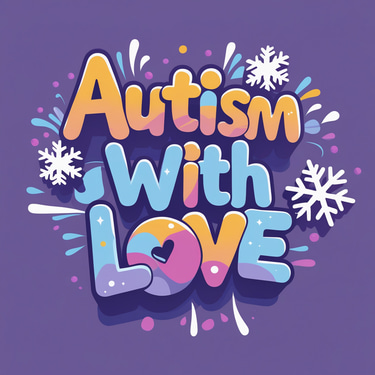Non-Verbal vs Pre-Verbal Communication in Autistic Children
Communication in autism varies widely, from nonverbal individuals to highly articulate speakers. Explores the different levels of communication in autism, including alternative communication methods like AAC devices, echolalia, and social language challenges. By understanding these diverse communication styles, caregivers, educators, and therapists can better support individuals on the spectrum in expressing themselves effectively. Whether you're a parent, teacher, or autism advocate, this introduction provides valuable insights into fostering meaningful connections.
AUSTISM SUPPORT
W. Love
4/4/20255 min read


At the end of the day, we want our children to be able to communicate. Communicate wants, desires, dream, and goals. Communicate when they are in pain or need comfort. Communicate anxiety, fear, and humor. How can we help our babies communicate?
Communication is an essential aspect of human interaction, encompassing a wide array of verbal and non-verbal means through which individuals express thoughts, emotions, and intentions. In children with autism, the modes of communication can significantly differ from neurotypical patterns, often can be classified into two primary categories: non-verbal and pre-verbal communication. Now this is not set in stone and I think are trendy words. Understanding these levels is crucial for caregivers, educators, and clinicians who aim to foster effective interpersonal connections with autistic children.
Non-verbal communication refers to the use of gestures, facial expressions, body language, and other forms of communication that do not rely on spoken language. Many autistic children may exhibit strong non-verbal communication skills, utilizing these modalities to convey their needs, preferences, and emotions. For instance, a child may point to an object, use eye contact, or display specific facial expressions to indicate interest or frustration. These non-verbal cues provide significant insights into the child's internal state and can serve as a bridge for interaction between the child and their environment. Screaming was so bad for our family, and honestly can still be disruptive, frustration is a hard emotion to control, even for adults.
On the other hand, pre-verbal communication denotes the early stages of communication development that occur before the child acquires verbal skills. This includes sounds, babbling, and early vocalizations, which can indicate the child's attempts to communicate even if they lack the complete mastery of language. Understanding the nuances of both non-verbal and pre-verbal communication is vital, as it allows caregivers to recognize and interpret the subtle signals that autistic children use to navigate their social world. This recognition can facilitate improved engagement and enhance the child’s ability to connect with others. Ultimately, an appreciation of these communication levels provides a foundational framework for exploring the broader implications of autism in communication development.
Defining Non-Verbal Communication
Again, in the context of autistic children, non-verbal communication can often manifest differently than in neurotypical peers. Research indicates that many autistic children may demonstrate unique patterns of body language or may rely more heavily on specific gestures to express their thoughts or feelings. For instance, a child may point to an object of interest rather than verbalizing their desire, using gestures as a primary communication method. Scholarly articles, such as those found in the Journal of Autism and Developmental Disorders, highlight how these non-verbal expressions can indeed be vivid and meaningful, conveying rich information even without words.
However, challenges often arise in social settings. Autistic children may struggle with the nuances of interpreting others' non-verbal cues, such as subtle facial expressions or variations in eye contact, which can lead to misunderstandings. For example, the inability to maintain eye contact may be perceived as disinterest, though it may simply reflect a different comfort level. On the other hand, mastering non-verbal communication can offer advantages – some children might find it easier to express themselves without the pressure of verbal communication, leading to more genuine interactions.
Understanding these facets of non-verbal communication is essential for fostering effective educational and social environments for autistic children. By recognizing and valuing their unique communication styles, parents and educators can create more supportive frameworks that encourage self-expression and interaction.
Understanding Pre-Verbal Communication
Developmentally, pre-verbal communication typically emerges during infancy, as children begin to engage with their environment. Initially, this includes cooing and babbling; as they progress, children start to use gestures like pointing, nodding, or waving. For autistic children, navigating these developmental milestones can vary significantly. Some may exhibit advanced pre-verbal skills, swiftly transitioning from gestures to more complex forms of communication, while others may take longer or even find these stages challenging. The use of pre-verbal strategies is particularly crucial for children who may experience delays in verbal expression.
Research indicates that pre-verbal communication serves as a vital foundation for later language development. The ability to convey thoughts and feelings through these early forms of communication helps build social connections. Children who engage in pre-verbal communication often experience more significant advancements in their ability to use spoken language as they grow. Additionally, understanding pre-verbal communication can aid caregivers and educators in fostering supportive environments that encourage this form of expression, offering means to better assess the child's communication needs and preferences. Insights from studies highlight the importance of recognizing and promoting pre-verbal communication skills to bridge the gap towards more complex verbal interactions.
Some studies also pointed to the role of environmental factors in the effectiveness of non-verbal communication. The setting in which autistic children communicate, including the presence of supportive adults and the availability of communication tools, was found to influence their engagement and success in interactions. Overall, these findings affirm that fostering non-verbal and pre-verbal communication skills in autistic children is not only vital for their immediate social interactions but is also instrumental in long-term communication development.
Assistive Communication Devices and Aids
Assistive communication devices and aids play a pivotal role in enhancing the communication abilities of autistic children who are non-verbal or pre-verbal. These tools are designed to support and augment the individual's existing communication skills, enabling more effective interaction with their environment and the people around them. One of the most common forms of these tools is Augmentative and Alternative Communication (AAC) devices. AAC encompasses a broad spectrum of communication methods that range from simple picture boards to sophisticated electronic devices, facilitating expression through both visual and auditory means.
The advantages of using AAC devices are manifold. Firstly, they provide an alternative means of expressing needs, thoughts, and feelings, which significantly reduces frustration often experienced by non-verbal children. By utilizing symbols or communication boards, children who struggle with spoken language can convey messages clearly. Moreover, the use of technology in AAC has revolutionized how children communicate. Devices equipped with touchscreens allow for interactive learning and engagement, making communication more accessible and enjoyable.
Recent advancements in technology have fostered the development of numerous applications aimed at supporting communication in non-verbal individuals. For instance, some apps integrate text-to-speech functionalities, allowing children to select images or text that corresponds to their needs, which are then vocalized by the device. This feature not only helps in expressing thoughts but also aids in language development by exposing children to spoken words. Additionally, the customizable nature of these technologies empowers caregivers and educators to tailor communication options to fit the unique preferences and requirements of each child.
I'm so grateful for the advancements of assistive communication devices and aids, particularly AAC devices that play a crucial role in fostering effective communication in autistic children who are non-verbal or pre-verbal. Their applications facilitate meaningful interaction and enhance the quality of life for these individuals.


